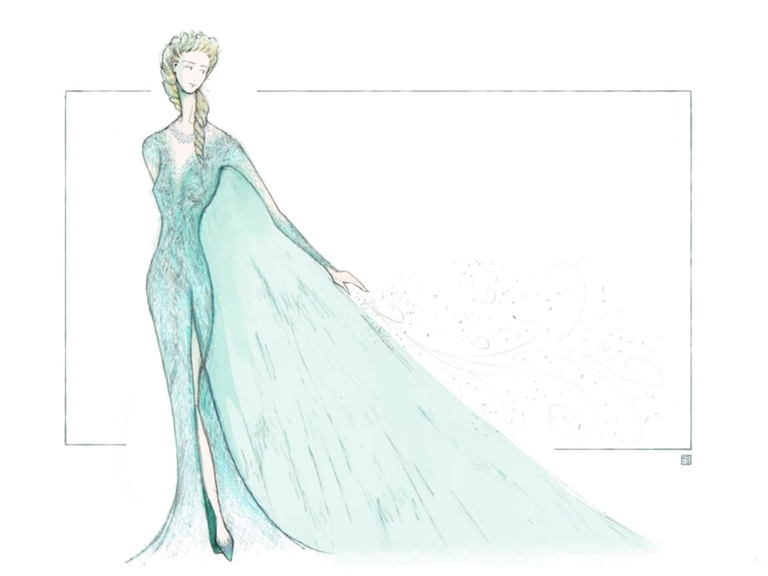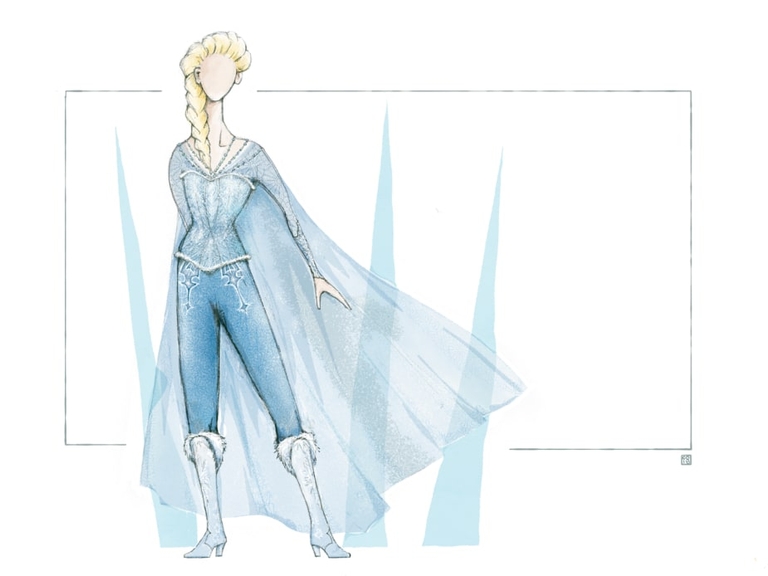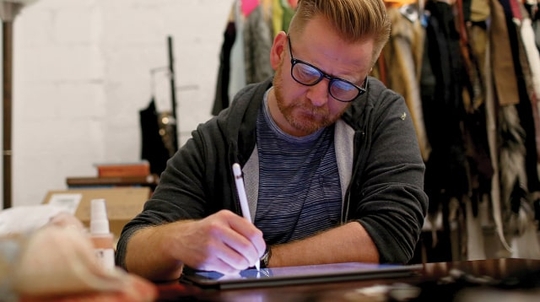
66 days, 3 hours, 50 minutes
until our final show!
8th September 5.30pm

What makes ‘Let It Go’
so catchy?

The truly remarkable thing about FROZEN is that in a musical that features a song as poignant as ‘Do You Want to Build a Snowman?’, as uplifting as ‘For the First Time in Forever’, or as funny as ‘In Summer’, there is one song that towers above them all, glittering like a freshly made ice palace.
We are talking, of course, about ‘Let It Go’, the song which, when FROZEN was released in the winter of 2013, became a sensation among anyone with ears. It reached the top five in the Billboard Hot 100 chart, sold 10.9 million copies in a year and won the Academy® Award for Best Original Song. Adults loved it, but it was a track that bewitched children – causing them to drive their parents to the brink of insanity by obsessively playing it over and over again.
It was the kind of magic about which pop song producers could only dream. After all, if it was that easy to make a catchy song, then everyone would be doing it. But what made ‘Let It Go’ work where so many others have not? What is the secret to its sorcery? We asked two music experts for their thoughts.


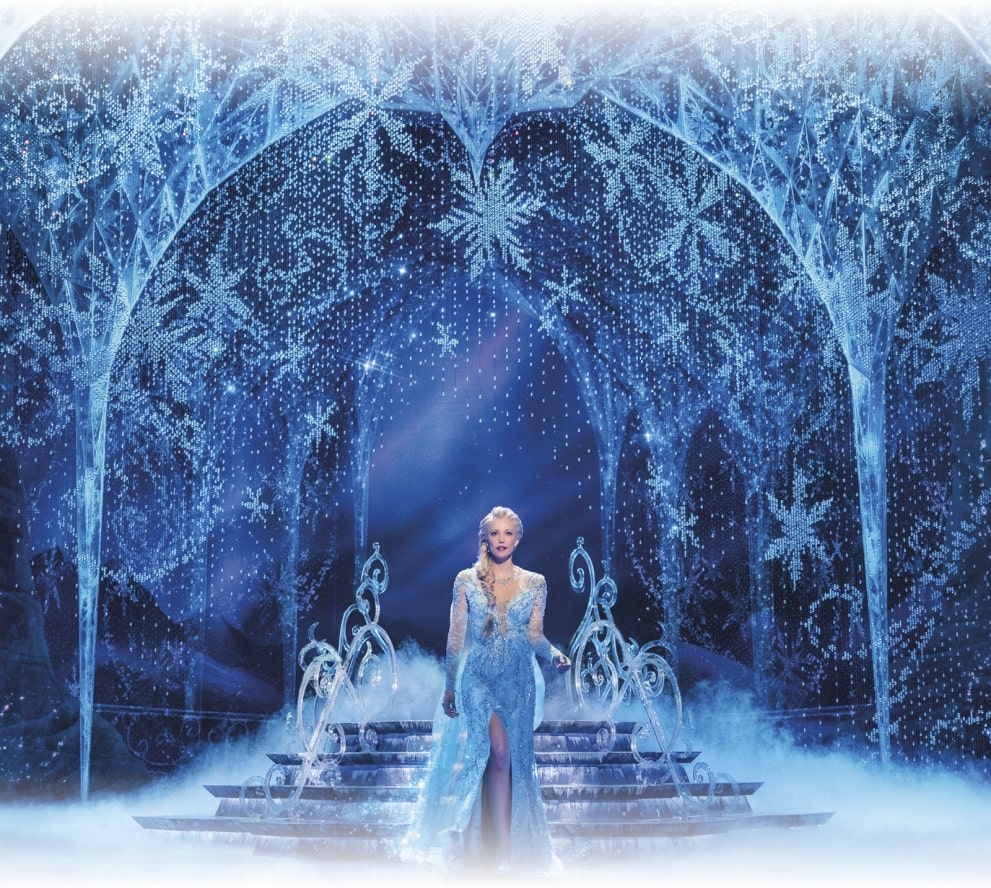
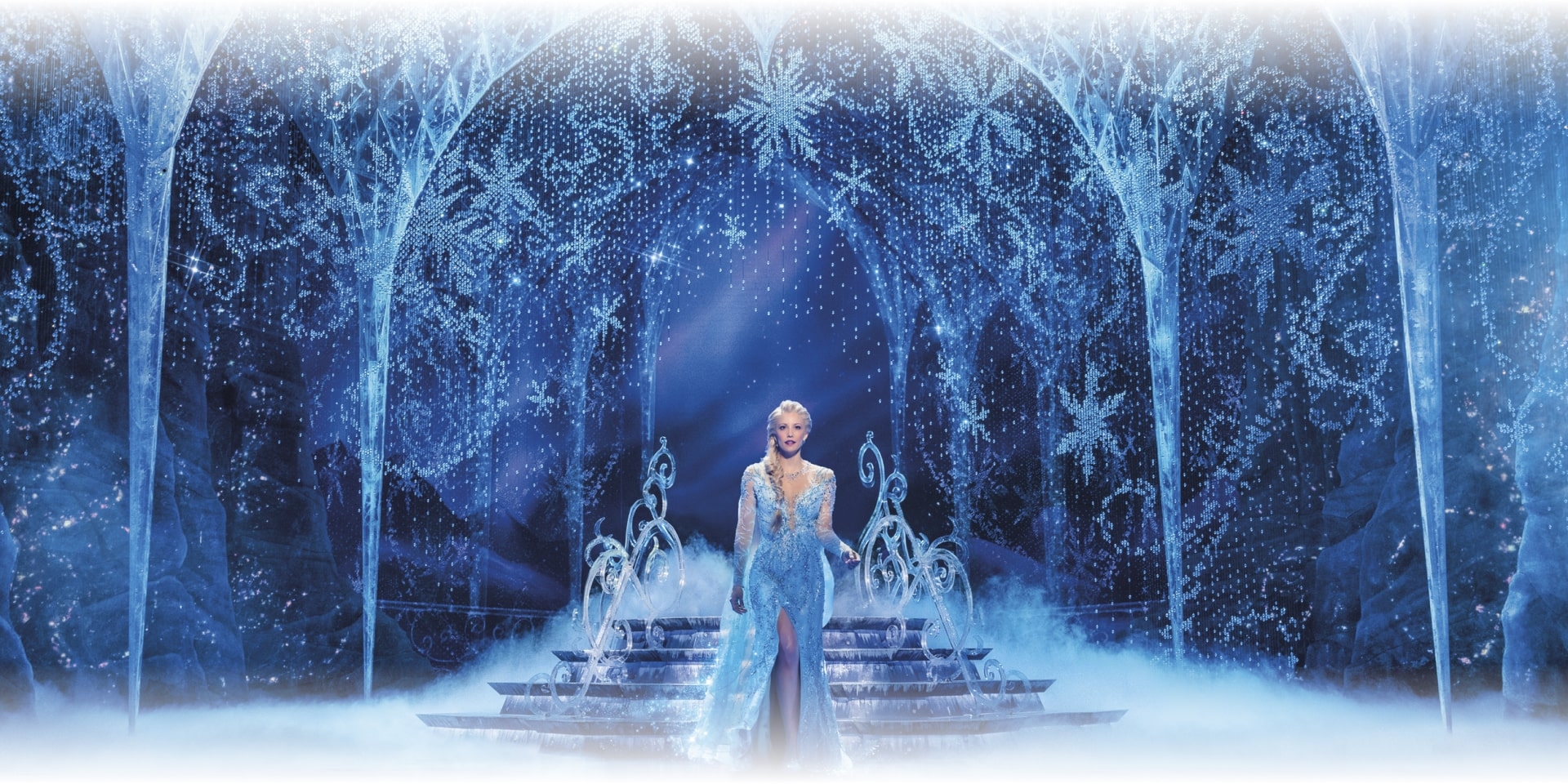

It's not your typical
musical theatre song
An effective pop song has to feel familiar the first time you hear it.
Dr Vasco Hexel
One theory for the incredible catchiness of ‘Let It Go’ is that it’s a musical number that owes more to pop music than to Broadway.
“‘Let It Go’ is basically a hit single that we get in the middle of a Disney film,” says Dr Vasco Hexel, who teaches composition for screen at the Royal College of Music. “It’s not as lush or as complicated as a musical theatre piece might otherwise be. The structure is quite streamlined so you get a very clear sense of verse / chorus / verse / chorus and that’s what makes pop songs so catchy – the immediate accessibility. They’re immediately catchy because there's an economy of style – there is so little material, but in the best possible way. An effective pop song has to feel familiar the first time you hear it.”
Yet while it’s true that ‘Let It Go’ shares similarities with pop music, its success cannot simply be attributed to the fact that it sounds like a pop song. Instead, its power lies in occupying a space somewhere between pop and musical theatre.
You can’t ignore the strong musical theatre credentials.
Dr Christopher Wiley
“It eludes classification,” says Dr Christopher Wiley, senior lecturer in music at the University of Surrey. “It does owe a lot to pop music, but you can’t ignore the strong musical theatre credentials. It’s written by Robert Lopez, who has worked on Avenue Q and The Book of Mormon, and his wife Kristen Anderson-Lopez. We’ve also got Idina Menzel singing it, who is well known to musical theatre audiences from Rent and Wicked. ”
“It is unusual for a Disney song,” he adds, “because it does have this journey but starts very bleakly, in a minor key. It sounds like it’s going to be a piano ballad, like it’s going to be a quiet, reflective number. It doesn’t sound like the kind of thing that might close the first half of a musical theatre show and leave the audience singing it during the break.”
A key ingredient of its catchiness is in the simplicity of the chorus:
“The lyrics couldn’t be simpler,” says Hexel. “‘Let it go! Let it go!’ – it’s so concise and so easy to remember. And it has this three-note motif that the three syllables sit on that, again, is so simple. It’s so small and yet so perfect, and is repeated often.
“Listeners look for hooks that they can latch on to and the chorus of ‘Let it Go’ gives them that,” says Wiley. “But there are other lyrics in the song that are actually very sophisticated and complex for a film that’s probably pitched at a young audience. Take ‘my soul is spiralling in frozen fractals all around’, from the bridge, which is very different from the likes of The Lion King’s ‘Can You Feel the Love Tonight?’, where lyrics like ‘believe the very best’ are very easy to comprehend. I can imagine kids up and down the country asking their parents what a frozen fractal is.”

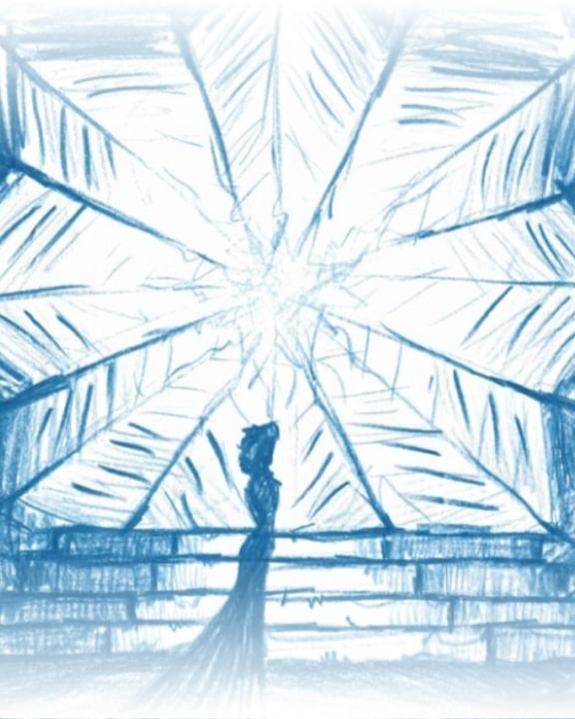

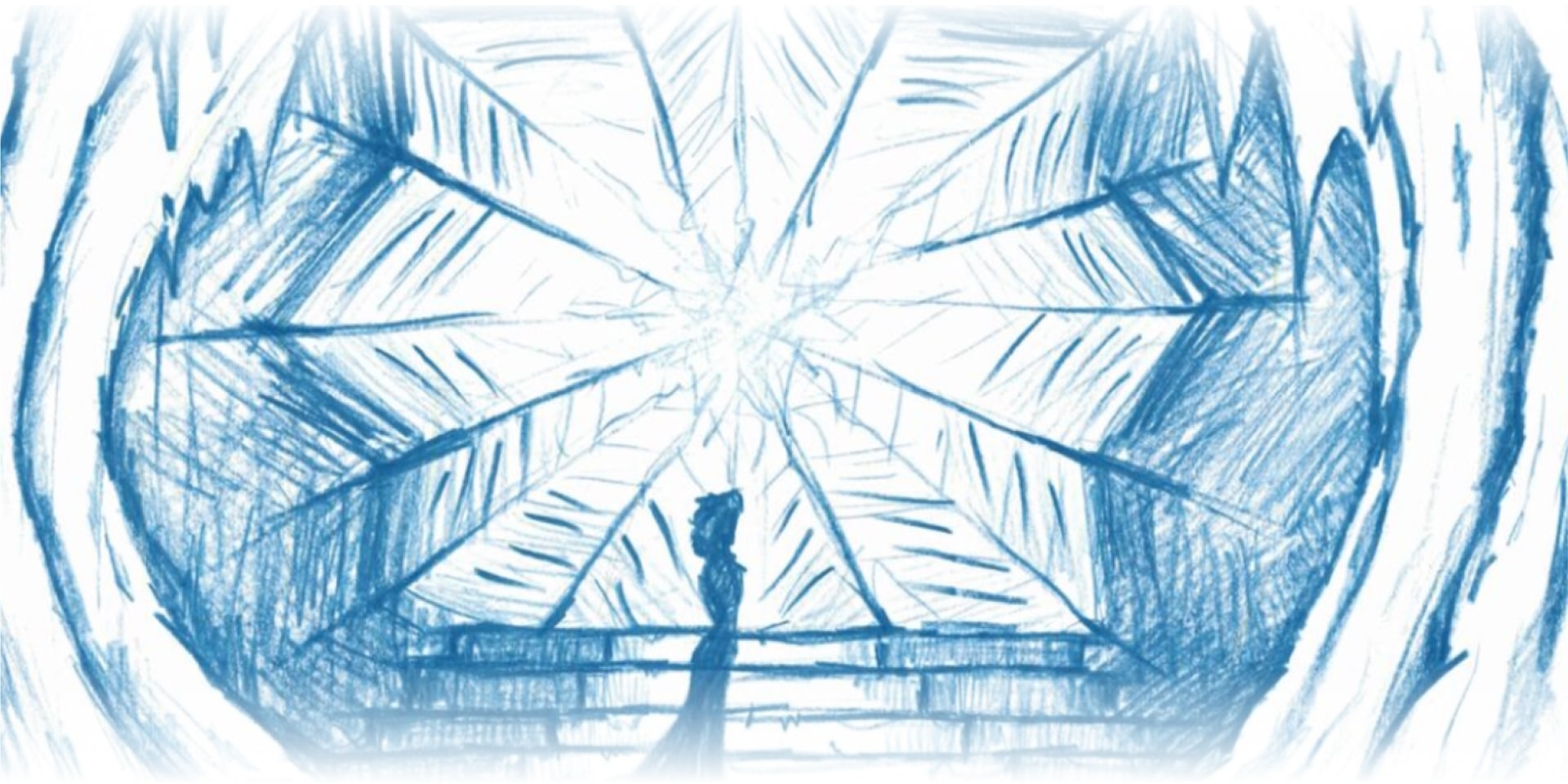

It’s the perfect marriage of sound and vision
One of the most striking things about ‘Let It Go’ is how successfully it has managed to stand on its own – how it has functioned, more or less, like a pop single. But would ‘Let It Go’ really be the cultural phenomenon it is if it was released in a universe where FROZEN didn’t exist? Where the song arrived without the context of Elsa and her great awakening, without her blue dress, power plait and giant ice palace? Our experts don’t think so.
“The way that the song goes with the film is very powerful,” says Wiley. “You see Elsa flinging her arms around, making ice come out of her hands and stamping on the floor and the floor becomes a snowflake. It’s the mirroring of the images and music – it cements it in our minds.
“It’s also the placement in the film. It’s the halfway point, it’s the turning point for Elsa. It’s part of her journey as a character. It’s just perfect for the final song of the first half of a musical theatre piece. It’s like ‘Defying Gravity’ in Wicked. It’s got that kind of power and strength to it.”
Hexel agrees.
“We’re getting this breakaway moment that suddenly feels oddly hopeful,” he says, “even though perhaps something quite bad and dark is happening. Yet it feels so empowering. From a storytelling perspective – and songwriters are storytellers – that moment is so well judged to say ‘we’re shining the spotlight on this character who is becoming so much more than we thought she could be’, which parallels nicely with her own experience of self-discovery. She’s saying ‘I’m finally going to be who I’m meant to be and I’m going to embrace who I am.’
“It must have been so tough for [Anderson-Lopez and Lopez] to figure out how to portray this complex character as somebody relatable. How does it feel to be outcast? How does it feel to be suddenly all on your own and yet find power within that? And to put that into music is a daunting task. I don’t know how many versions they would have gone through. What they’ve ended up with, though, is this hit song that encapsulates that moment so effectively. It’s something that’s difficult to plan. I’m a composer, right? And if I had to sit down and try to do that... It doesn’t just happen. A lot of stars have to align.”
It’s also the placement in the film. It’s the halfway point, it’s the turning point for Elsa.
Dr Christopher Wiley
One of the most striking things about ‘Let It Go’ is how successfully it has managed to stand on its own – how it has functioned, more or less, like a pop single. But would ‘Let It Go’ really be the cultural phenomenon it is if it was released in a universe where FROZEN didn’t exist? Where the song arrived without the context of Elsa and her great awakening, without her blue dress, power plait and giant ice palace? Our experts don’t think so.
“The way that the song goes with the film is very powerful,” says Wiley. “You see Elsa flinging her arms around, making ice come out of her hands and stamping on the floor and the floor becomes a snowflake. It’s the mirroring of the images and music – it cements it in our minds.
“It’s also the placement in the film. It’s the halfway point, it’s the turning point for Elsa. It’s part of her journey as a character. It’s just perfect for the final song of the first half of a musical theatre piece. It’s like ‘Defying Gravity’ in Wicked. It’s got that kind of power and strength to it.”
Hexel agrees.
“We’re getting this breakaway moment that suddenly feels oddly hopeful,” he says, “even though perhaps something quite bad and dark is happening. Yet it feels so empowering. From a storytelling perspective – and songwriters are storytellers – that moment is so well judged to say ‘we’re shining the spotlight on this character who is becoming so much more than we thought she could be’, which parallels nicely with her own experience of self-discovery. She’s saying ‘I’m finally going to be who I’m meant to be and I’m going to embrace who I am.’
It’s also the placement in the film. It’s the halfway point, it’s the turning point for Elsa.
Dr Christopher Wiley
“It must have been so tough for [Anderson-Lopez and Lopez] to figure out how to portray this complex character as somebody relatable. How does it feel to be outcast? How does it feel to be suddenly all on your own and yet find power within that? And to put that into music is a daunting task. I don’t know how many versions they would have gone through. What they’ve ended up with, though, is this hit song that encapsulates that moment so effectively. It’s something that’s difficult to plan. I’m a composer, right? And if I had to sit down and try to do that... It doesn’t just happen. A lot of stars have to align.”
